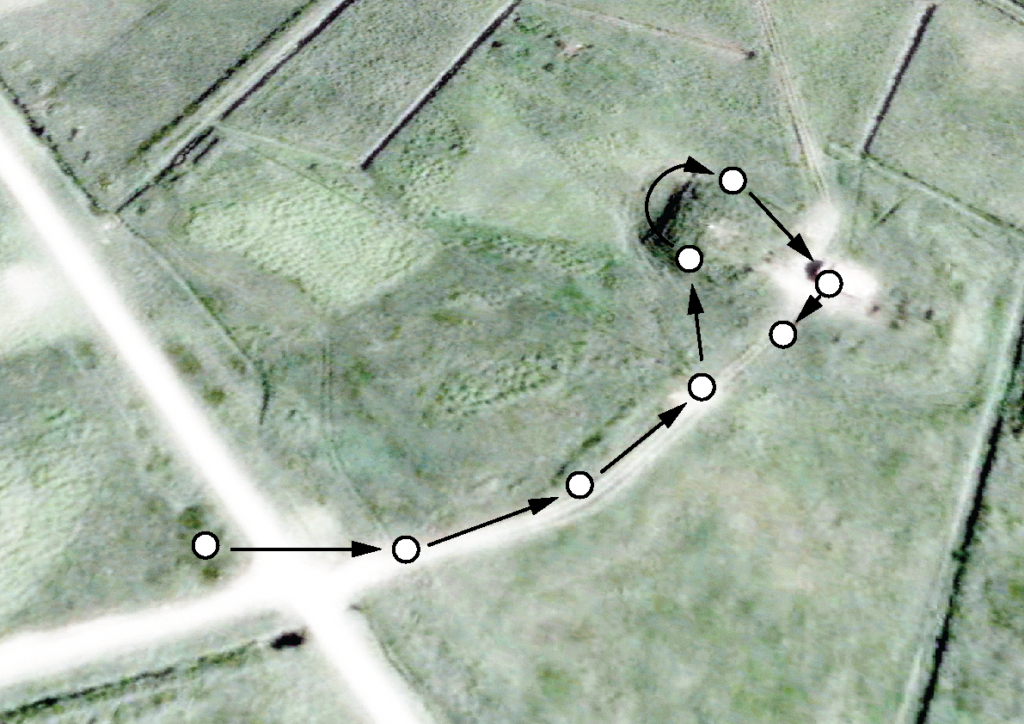1722C-Staðarhóll
Staðarhóll í Saurbæ fór í eyði á áttunda áratugnum og þar með lauk nær þúsund ára sögu byggðar á staðnum. Sú saga er líka mjög merkileg og stór nöfn í sögu þjóðarinnar leika þar stór hlutverk. Á Staðarhóli bjó Sturla Þórðarson lögmaður, sagnaritari og skáld en eftir hann er talin liggja Íslendingasögur, Sturlunga sögur og fleiri merk handrit sem eru þjóðargersemi landsins. Á Staðarhóli bjó Staðarhóls-Páll sem á 16. öld byrjaði að grafa skipaskurð, þann eina sem vitað er um á Íslandi. Þar stóð kirkja allt til ársins 1900 og svona má lengi telja.
Verkefnið gekk út á að skapa áfangastað fyrir gesti með áherslu á þessa merku sögu. Það er augljóst að bærinn stendur á myndarlegum bæjarhól sem hefur ekki verið rannsakaður, en ljóst er að í nánustu framtíð munu fara fram fornleifarannsóknir á staðnum. Áskorunin var því að ná þeim markmiðum um fræðslu og geta tekið á móti þeim vaxandi fjölda ferðamanna sem nú þegar heimsækja staðinn án þess að raska staðnum. Þá er það fíllinn í herberginu en íbúðarhúsið stendur enn en er afar illa farið eftir að hafa verið yfirgefið í fjörtíu ár. Í dag er það beinlínis hættulegt fyrir fólk að umgangast það án leiðsagnar.


Hugmyndin er að skapa leiðsögn um svæðið eftir leiðsögn sem byrjar á landnámi en endar á tuttugustu öldinni í íbúðarhúsinu sjálfu. Á leiðinni eru áfangastaðir með fróðleik og víðsvegar eru sýningarkassar með eftirlíkingu af munum sem kunna að finnast á svæðinu. Íbúðarhúsið skal vera lokað af og varðveitt í þeirri mynd sem það er í í dag, en gestum gefin kostur á að horfa innum glugga og sjá skyndimyndir frá liðinni tíð.
///
Staðarhóll is an abandoned farm in the Dalir region in West Iceland. When it became derelict in the 70’s it marked an end to a history spanning 1000 years of habitation. And the history was quite remarkable as many of the key figures in Iceland’s medieval history lived there. For example, Staðarhóll was the home of Sturla Þórðarsson a lawmaker, poet and historian that is believed to have written the Icelanders Sagas and other valuable manuscripts, considered to be national and international treasures.

The assignment was to create a site open to visitors that would be informative and enlightening for those who who come to experience the rich history of the area. It is obvious that there is a lot of archeology on the site and ruins can be spotted in the landscape, even by amateurs and in near future a thorough archaeological research will commence on the site. The challenge is to allow visitors to travel around the site and provide them the information and history without causing much disturbance. And then there is the elephant in the room, the main house from the 50’s that has been left derelicht for over forty years. Currently it hazardous for visitors without guidance but is very louring to visitors.
The idea is to create a pathway which illustrates the timeline of the site, starting at the carpark at the settlement era and ending with the mid 20th century at the main house. Along the way there are rest stops were guests can read through the history and every now and then there are display cabinets with replicas of possible artifacts, waiting to be discovered. The main house is proposed to be closed off and preserved in it current stage – illustrating the decline of the 20th century agriculture. Visitors will however have an opportunity to glimpse inside to see snapshots of the past.



